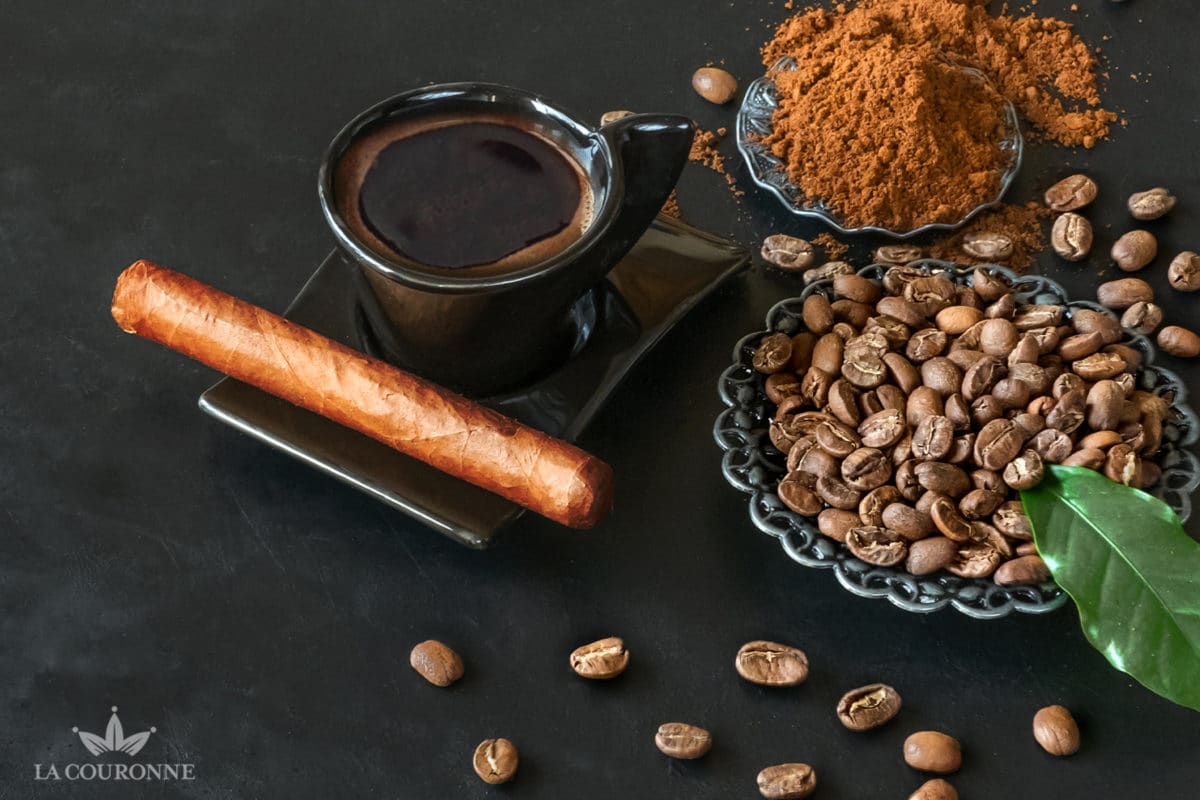L'académie du cigare, All about cigars
Everything you need to know about the flavours and aromas of your cigars
You don't smoke a cigar, you savor it. A veritable ritual for passionate cigar aficionados, cigar tasting means taking the time to discover the aromatic bouquet on offer. Just as when we savor a fine wine or a refined dish, we must be fully aware of the precious nature of the object before us, and pay homage to it by taking care to analyze the olfactory and gustatory impressions it evokes. The discovery of aromas and flavours is thus the very essence of the pleasure of cigar smoking. Both an object of relaxation and contemplation, this artefact stimulates our senses and awakens our sensory memory.
The origin of cigar flavours and aromas
The great diversity of flavors and aromas present in cigars often leaves uninitiated smokers perplexed. They imagine that only the addition of artificial flavours can explain this vast aromatic palette. However, the cigars we love so much, and which we know under the generic name of "premium cigars", contain only natural aromas.
The heterogeneity of aromas and flavours naturally present in cigars can be explained in a number of ways. To begin with, there's the choice of seed and the characteristics of the terroir. As a living organism, tobacco draws the nutrients it needs from the soil. The chemical composition of the soil will therefore determine the internal characteristics found in tobacco. Tobacco aromas will therefore differ according to whether it grows in clay, limestone or silty-clay soil. For example, Cuban cigars are famous for their cedar, earth and spice aromas, as well as their salty, roasted notes. A Dominican cigar, on the other hand, is characterized by aromas of cocoa, toast and nuts.
In addition to seed type and soil characteristics, tobacco processing techniques are also factors in flavor diversification. The way tobacco is cured, for example, will influence the sugar and nicotine content of the leaves, and thus the final taste of your module. The fermentation process reduces the acidity of the leaves and refines their aromas. Known as one of the few premium cigar brands to use a third fermentation, Cohiba offers cigars with particularly balanced and refined aromas.
Finally, the diameter of a cigar, its composition and the way it is stored modify the way its aromas are perceived. As a general rule, a large cigar will tend to offer more pronounced aromas than a thin one. It's also clear that the blend of tobaccos present in a cigar is a determining factor in the perception of its final taste. A true art in its own right, cigar blending requires a perfect knowledge of the characteristics of the different tobaccos, and the ability to combine their aromas in a harmonious and daring way.
The different types of aromas
A source of debate for cigar aficionados, the perception of a cigar's aromas and flavors can vary considerably from one smoker to the next. Nevertheless, there are tasting notes that characterize most cigars.
Woody and vegetal notes
Woody notes are among the aromas most frequently found in premium cigars. Cedar, oak and hickory are the most common tasting notes. They may be naturally present in tobacco, but are more generally the result of how cigars are aged and stored. As with wine, aging in oak barrels brings woody notes to tobacco. Cigars are also often stored in cedar boxes to enhance their preservation.
Vegetal notes are characterized by aromas of undergrowth, grass, humus and green tea. They bring a sensation of sweetness and freshness to the tasting experience. Padrón 1964 Anniversary, for example, introduces notes of cedar, coffee and walnut, as well as subtle earthy and herbaceous flavors.
Natural notes
The main natural notes present in our cigars are leather and earth. They bring a profoundly organic dimension to the tasting experience, taking us on a journey to the plains of Camagüey, to the heart of a stable, or to the middle of a freshly ploughed field. These aromas appeal primarily to our olfactory memory. There are also notes of barnyard, hay, ooze and salt. The San Cristobal and Ashton VSG series offer fine examples of natural notes.
Spicy notes
Like woody notes, spicy notes are very frequently found in the aromatic palette of top-of-the-range cigars. Black and white pepper are among the most common aromas, but you may also find notes of cumin, nutmeg, clove, cinnamon, saffron or vanilla. These notes are generally found in expressive cigars such as habanos and Nicaraguan cigars. The Oliva Serie V and My Father Le Bijou 1922 cigars are particularly appreciated for their full-bodied profile and pepper notes.
Walnut notes
Nutty notes appear mainly in mild cigars, but can also be found in more full-bodied cigars. Like their terroirs, these aromas are particularly diverse. There are notes of peanuts, cashew nuts, chestnuts, hazelnuts, pecans, almonds and pistachios. The most discerning aficionados, for example, will be able to recognize the Santiago green almond or the San Luis pistachio. These nutty notes can be creamy or roasted, and can be found in cigars such as Ashton Classic or Montecristo 80 Aniversario.
Sweet notes
Most Dominican cigars have strong sweet notes, but these can also be found in most terroirs. Among the sweet notes, coffee, cocoa, molasses, caramel, honey and maple are among the most common. Often described as bringing sweetness and creaminess to the tasting experience, these aromas can also be roasted. In this case, they can enhance the acidity, bitterness or fruitiness of the aromas. TheArturo Fuente Anejo is a fine example of a cigar that plays beautifully with the sweet flavors of tobacco.

